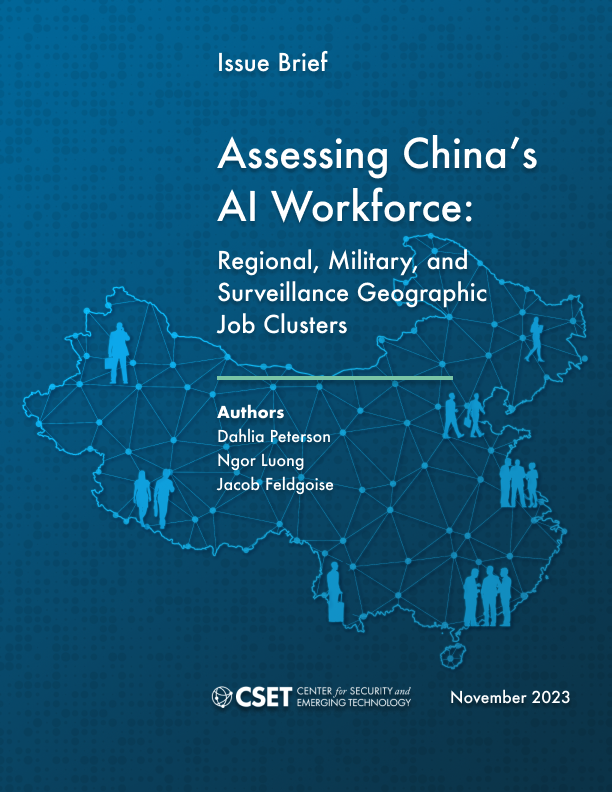Executive Summary
The Chinese government’s prioritization of artificial intelligence (AI) includes a distinct focus on cultivating talent, a key ingredient for AI development. However, little is known about the quantity or characteristics of technical AI talent that Chinese employers hope to hire. In this report, we highlight regional and local clusters where demand for AI talent is particularly high, as well as assessing the job demand signal from China’s defense and surveillance sectors. This paper is a follow on to our November 2022 brief on “China’s AI Workforce: Assessing Demand for AI Talent,” which examined employers’ demand for AI talent through a dataset of 6.8 million active Chinese job postings collected between April and July 2021. From the dataset, this paper focuses on a subset of 58,229 job postings that are most likely to be part of China’s technical AI workforce.
This paper first examines the distribution of technical AI job postings by region and city. It then identifies AI job postings in national security-relevant sectors by looking at AI job postings advertised by defense-affiliated entities and those related to surveillance.
We find:
- 78 percent of job postings are geographically concentrated in three economically and technologically developed hubs with large population centers: the Yangtze River Delta region, the Pearl River Delta, and the Beijing-Tianjin-Hebei area. Other provinces with relatively high demand for AI talent also include Hubei, Shandong and Hunan.
- 10 cities accounted for 71 percent of job postings. The top three were Shanghai, Shenzhen, and Beijing.
- 9 defense-affiliated universities advertised 79 AI job openings across 10 provinces. Additionally, the People’s Liberation Army (PLA) directly advertised two positions. Fujian had the highest concentration of defense-affiliated AI job postings, with 24 jobs posted.
- 2,877 job postings were related to surveillance, which were concentrated in Guangdong, Shanghai, Jiangsu, Beijing, and Zhejiang. These postings included keywords such as facial recognition, feature extraction, speech recognition, sentiment analysis, and safe cities.
